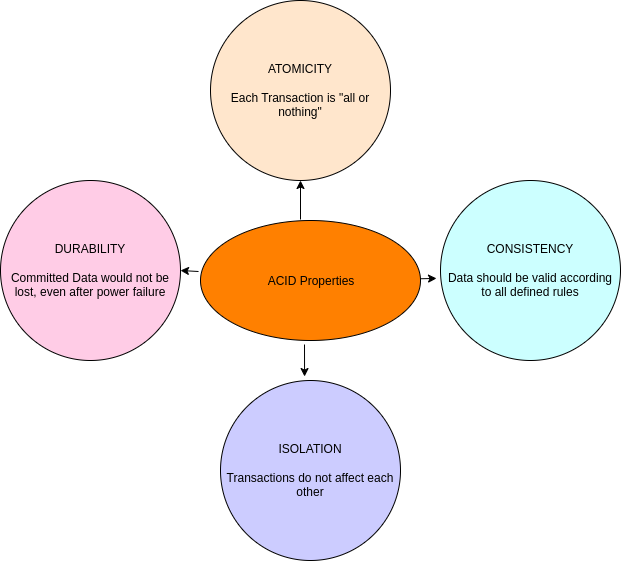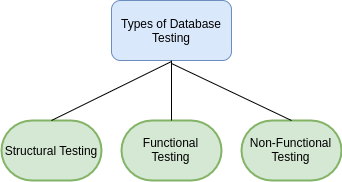Introduction:
The lifeblood of any software program is its data, which is kept in a database for subsequent retrieval and analysis. However, as data increases in quantity and complexity, handling the data becomes increasingly challenging. That’s why database testing is important.
What is Database Testing?
The careful way of coming to a decision about whether a database is accurate, complete, safe, good and ready is experienced as database testing. This is possible by valuing a variety of operations, such as expertly handling facts, storing information, and performing acts to acquire information back. It gives support to (a statement) that the knowledge, and news given are accurate and in harmony. Additionally, it aids in identifying any issues that can compromise the application’s functionality and safety.
The initial step in database testing is to create SQL queries that verify and state the various database operations, structures, and given features required by the application for which the database is intended.
To ensure that the database is configured properly, this procedure may involve validating the schema and testing CRUD operations and transactions.
Why Database Testing is important?
It is common knowledge that data is gathered and kept in the database in a systematic manner. Although database management systems make it easier to retrieve, store, and manage information in an organized manner, there are some edges where information may be duplicated, added to more than is necessary, etc. In certain circumstances, database testing comes into play, helping us by assisting in fact-checking. Testing databases is a crucial step in maintaining the care, consistency, truth, and goodness of facts.
Data Mapping
In an application, data moves from the Front-End (UI) to Back-End (Database) and vice versa. So the below-mentioned things of data should be taken care of.
i) Based on the input given by the user, the backend tables should be mapped correctly to the user interactions.
ii) On updating the data in the UI, the database also should be updated immediately.
1. ACID Properties Validation:
A database management system’s (DBMS) “acid properties” are a set of guidelines that assure the transactions will be processed correctly. Atomicity, Consistency, Isolation, and Durability are together known as ACID. Consistency and dependability in transactions are guaranteed by ACID properties in DBMS.
i)Atomicity:
The ACID Property in DBMS known as “atomicity” refers to the notion that the data is kept atomic. It implies that every operation performed on the data should either be carried out entirely or not at all. It also means that the process shouldn’t be stopped mid-way through or stopped. The procedure should be finished entirely rather than partially when working on a transaction. The transaction is terminated if any of the operations are not fully performed.
An ongoing process may occasionally be interrupted by one that has a higher priority. The current operation will be stopped and terminated as a result of this.
II)Consistency:
Consistency is the ability to consistently uphold the same norms, beliefs, and behaviors. Data written to the database must be valid in accordance with all established criteria in order to maintain consistency. Data consistency in this context refers to maintaining information’s consistency while it travels through a network or between computer programs. It is employed to guarantee the database’s data integrity and quality. It is one of the key ideas in DBMS since it guarantees that the information in the database is accurate, usable for making decisions, and valuable for metrics and analytical purposes as well.
iii)Isolation:
A state of separation is referred to as isolation. When many transactions can occur simultaneously and no data from one database should affect the other, this is known as isolation in DBMS. In other words, the process on the second state of the database should start as soon as the operation on the first state is complete. Indicating that the value of one database may not be impacted by the value of the other if two operations are performed on two different databases. Consistency should be upheld in the case of transactions when two or more take place simultaneously. Changes made in one transaction won’t be visible to subsequent transactions unless the changes are stored in memory.
IV)Durability:
When referring to the ACID Property durability in DBMS, it is important to note that once an operation is successful, the database remains permanently stored on the disc. The database should be sufficiently secure to remain operational even if the system malfunctions or crashes. The recovery manager, however, is in charge of ensuring the database’s long-term viability in the event that it is lost. The COMMIT command must be used to commit the settings after each modification is made.

2. Data Integrity:
The overall completeness, accuracy, and consistency of the data across its entire lifecycle is known as data integrity. When a piece of data has integrity, safeguards have been put in place to make sure that it cannot be altered by an unauthorized person or program while it is in use, while it is in transit, or while it is at rest. Making sure that data can be relied upon when restored following an interruption is a key objective of maintaining data integrity.
3. Business Rule Conformity:
Components such as triggers, relational forces to limit, stored Procedures, and so on will also be complex when the database has complex parts. In such a case, the testers make ready some sql queries that will verify the correctness of the complex data.
Types of Database Testing:
- Structural Testing
- Functional Testing
- Non-Functional Testing

Structural Testing:
Structural database testing is the process of verifying each component that is present in the data repository and is generally used for data storage. End users are not permitted to directly edit certain items.
Schema Testing
This type of testing is also known as mapping testing and is performed to make sure that the front end and the back end’s schema mapping are similar. The following are a few of the crucial testing checkpoints:
- Checking all the schema formats connected to the databases.
- It is necessary to verify any unmapped tables, views, or columns.
- It is also necessary to confirm the consistency of the environment’s heterogeneous databases with the overall application mapping.
- Several tools for validating database schema are provided.
Database Table and Column Testing
Following are a few of the crucial testing checkpoints:
- The consistency of the mapping of database fields and columns at both the front end and the back end. Verifying that database fields and columns have the appropriate length and have the appropriate names.
- Finding and validating any database tables or columns that are not being used or mapped.
- Verifying that the front end of the application and the backend database columns’ data types and field widths are compatible.
- Examining the database fields mentioned in the business requirement specification to ensure that users can provide the appropriate inputs.
Keys and Indexes Testing
Here are some crucial checkpoints that should be considered during this testing process:
- Confirming that the necessary tables already have the Primary Key and Foreign Key constraints.
- The verification of the foreign keys’ references.
- Ensuring that the primary key’s data type and the matching foreign key’s data type are identical in the two tables.
- Utilizing the naming standards to validate the names of all the keys and indexes.
- Verify the necessary fields, index size, and length.
Stored Procedures Testing
Here are several crucial checkpoints for this testing:
- Verifying that the development team used the necessary coding standards, exception handling, and error handling for all of the stored procedures in each module of the software that is being tested.
- By providing the necessary input data to the application that is being tested, you can make sure that the development team has covered all the circumstances and loops.
- Checking each time data was fetched from the designated database tables to see if the development team has correctly implemented the TRIM operations or not.
Trigger Testing
Here are a few crucial checkpoints that need to be considered during this testing process:
- Confirming that the triggers that have been activated have satisfied the DML transaction’s specific trigger conditions.
- Once the triggers have been used, verify that the data has been updated correctly.
- Verify the application’s functions, including the triggers for Update, Insert, and Delete.
Database Server Validations
Here are a few significant checkpoints that should be considered during this testing process:
- Firstly checking that the database server configurations are as the business needs specify.
- Confirming that the database server can accommodate the requirements of the maximum number of user transactions permitted by the business requirement specification.
Functional Testing:
Functional database testing is the method used to make sure that end users’ transactions and procedures are in line with and satisfy business requirements. Various Types of Functional Testing are:
- Black Box Testing
The process that checks various functionalities by verifying the integration of the database is called Black Box Testing. To verify the incoming and outgoing data from the function uses simple test cases. Cause-effect graphing techniques, boundary-value analysis, and equivalence partitioning-like techniques are used to test the database functionality. - White Box Testing
White Box Testing is concerned with users unaware of the specification details and the internal structure of the database. Moreover, database functions, triggers, views, SQL queries, etc., are tested in this. It is used to validate the database tables, data models, database schema, etc.
Non-Functional Testing :
The process of performing load testing, stress testing, checking minimum system requirements by detecting risks, and optimizing the performance of the database is Non-functional testing.
Major types of Non-Functional Testing are:
- Load Testing
The purpose of load testing is to confirm how the majority of the database’s active transactions will affect performance. - Stress Testing
Stress testing is a testing process to identify the breakpoint of the system. LoadRunner and WinRunner are the commonly used Stress Testing Tools.
Database Testing Stages:
The key stages in database testing are:
- Setting Up of Testing Pre-Requisites
- Executing The Tests
- Verifying Test Status
- Validating the Results
- Consolidating And Publishing Report
How to effectively do the database testing?
There are several step’s involved in performing effective database testing. These include
- Defining test scenarios:
The first step is to define the test scenarios to validate the database’s functionality. - Data preparation:
The next step is to prepare the data that will be used for testing. - Test execution:
The third step is to execute the test scenarios and validate the results. The testing can be conducted either through manual means or by utilizing automated testing tools - Performance testing:
Performance testing involves measuring the database’s performance under different load conditions. - Security testing:
Security testing involves identifying and addressing vulnerabilities in the database that could be exploited by attackers. - Regression testing:
Finally, re-testing the database after changes have been made to ensure that there are no unintended consequences
Database Testing Tools:
There are various types of database testing tools available. Each is designed to address specific challenges in database testing. Some of the popular database testing tools are:
- SQLUnit
- DbFit
- Data Factory
- Apache JMeter
- QuerySurge
These are just a few examples of database testing tools available in the market.
Best Practises:
- Plan your testing:
Planning your database testing by defining the testing strategy, identifying the testing objectives, and defining the test scenarios and test cases. - Test all data types:
To ensure all the data are stored and retrieved correctly, you should test all the data types like text, numbers, dates, and special characters. - Test database transactions:
To ensure all the transactions are being executed correctly, you should test database transactions. You have to test all transaction processing, error handling, and recovery also. - Use test data:
You should create test data that represents real-world scenarios to test which ensures test results are consistent and repeatable. - Test performance:
To ensure that the database can handle the expected load, you have to test the performance of the database. You have to test data insertion, retrieval, and deletion. - Check – Do scheduled jobs execute in a timely manner?
- Take a timely backup of the Database.
Conclusion:
In order to ensure that the information being used is secure, reliable, prepared, safe, and consistent, database testing is a crucial component of software testing. The techniques discussed while can be used to test databases effectively and with little assistance, ensuring that they are being used for the intended reasons and putting an end to a tragic situation. Thus Database Testing adds value to Feature Testing.
References:
- https://www.guru99.com/data-testing.html
- https://www.geeksforgeeks.org/software-testing-database-testing
For more interesting blogs, check our Engineering Blog site

